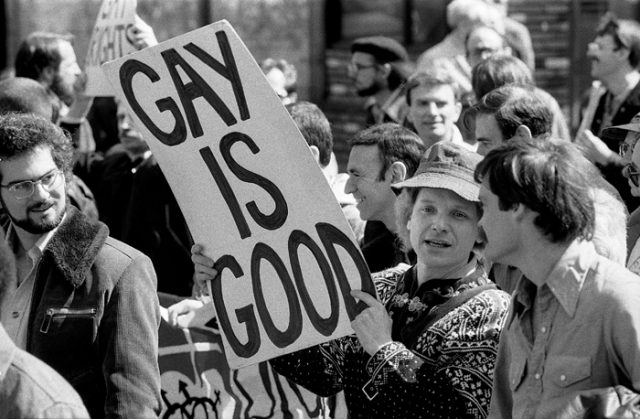Celebrating LGBTQIA+ artists

Welcome to LGBTQIA+ History Month, when we reflect on the discrimination faced by so many people of diverse sexual and gender identities around the world, the history of persecution of sexual and gender minorities in Britain, celebrate the progress that has been made towards a fairer and more just society, and look critically towards what many of us hope will continue to be progress towards a future that embraces and encourages everyone.
Just to unpack that massive acronym, LGBTQIA+ stands for Lesbian, Gay, Bi, Trans, Queer, Intersex, and Asexual, while the plus at the end reminds us that there are as many sexual and gender orientations as there are people and that however long the acronym were to be made, it would never be fully inclusive.
Art, culture and homosexuality
I’d like to start this LGBTQIA+ History Month focusing on some largely forgotten LGBTQIA+ artists. There are several art exhibitions featuring works by LGBTQIA+ artists that you can visit between February and April 2024, including several in London and one in nearby Chichester. You needn’t worry about being faced with walls plastered with the naked male form – these artists painted all aspects of life; their art wasn’t necessarily gay; it is just that they were.
Click here to take a look at the list of exhibitions on offer and see if any grab your fancy.
One of the things I always try to do during LGBTQIA+ History Month is introduce more people to LGBTQIA+ people from the past who never made it into mainstream History. History (with a capital H) is a carefully curated product – it is what we are told happened in the past, a highly selective and subjective representation of who and what those with power and influence would like us to recognise and appreciate. If you have never read Carr’s “What is History?” (available in the Library), I can thoroughly recommend it as an introduction to just how far the History you have received differs from an objective telling of what happened in the past.
When I tell people that people are frequently erased from history, they think of Stalin ordering friends to be airbrushed out of photographs but the recording of history erases almost everyone who ever lived, focusing only on selected individuals and events. Worse, entire segments of society are deliberately forgotten. Women, Black people, and gay, bi, and trans people have always struggled to be recognised and remembered. History does not want to remember them. Some of our most important innovators have been women, Black, or LGBTQIA+ but they are not remembered.
Selective forgetting and heteronormativity
It is even harder for LGBTQIA+ people to be remembered because of the prevailing assumption that everyone is heterosexual until confirmed otherwise. Indeed, it was until recently libellous to suggest a man was homosexual without proof and it is still possible to sue someone for suggesting you are gay. So, LGBTQIA+ people who have been remembered are often remembered only for their creative outputs and not for themselves. So much of the person is forgotten, including who they loved. Did you know that David Hockney, Andy Warhol, Francis Bacon, Raphael, and possibly even Michaelangelo, who famously painted the Sistine Chapel, were all gay, yet the truth about their sexuality is frequently and rigorously suppressed in order to ‘cleanse’ their reputation. The message being sent is clear: great artists cannot be known to be gay, and gay people cannot be remembered as great. We must work hard to expose and remind people of the truth.
Relatable role models matter to everyone. For LGBTQIA+ people growing up now, it is vital that we hold up the trailblazers and great success stories of the past and help them see people who look like them so they may aspire to become great themselves. Black people, women and especially the disabled have all experienced similar challenges but it is perhaps most keenly felt by LGBTQIA+ people because while Black people and women have successfully come together to resist oppression and marginalisation, as Matthew Todd writes in his book “Straight Jacket”, gay male subculture at least has instead tended to abrade young LGBTQIA+ people and teach them they are only as valuable as their looks, and that their value depreciates with age.
A culture of protest and resistance
With that said, the LGBTQIA+ community has risen time and again to throw off the shackles of imposed shame and to let the world know that it exists. Don’t miss the exhibit appearing in the Library Display Space later this month showcasing protest posters and scenes from the LGBTQ+ rights freedom marches of the past!





Leave a Comment (note: all comments are moderated)